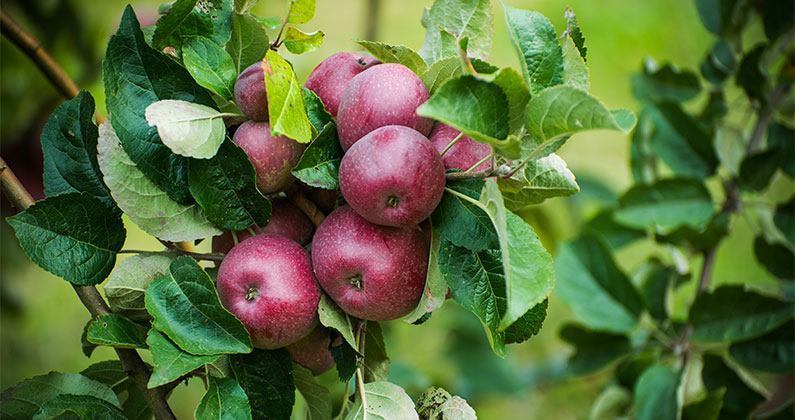Patience. It’s a necessary attribute for anyone in the U.S. cider industry — whether waiting for the general public’s cider education to expand or attempting a barrel-aged cider for the first time. But one of the most trying aspects? Gaining permission from the USDA to grow a foreign fruit varietal. Some cider masters have waited over a decade for approval, like Black Diamond Farm’s Ian Merwin who said it took 12 years before he could grow Spanish apples here. And AeppelTreow Winery & Distillery’s Charles McGonegal says, in retrospect, he wouldn’t pursue growing international pears here. “I think I’d spend more time hunting down volunteer pears on old farms,” he says.
Horticulturist Thomas Chao, who is also the Apple Curator for the USDA, heeds a warning to those interested in introducing a new variety. “The quarantine process is a very long and complicated process,” he says. “Normally it takes several years to index and clean up for all the known diseases, especially the virus, viroid and phytoplasm type of disease. The entire quarantine process normally takes four to six years.”
Chao also detailed the first two hurdles associated with securing approval to grow new-to-the-U.S. apples. First, one must determine if intellectual rights over the variety exist. If they do, the grower must negotiate with the owner for permission. If rights have not been staked, the interested party can move on to step two: following U.S. quarantine protocol. Currently, two American entities satisfy the quarantine requirements: Maryland’s USDA APHIS Quarantine Center and Washington State’s Clean Plant Center Northwest (CPCNW).
Each entity has its own protocol in place. APHIS provides the quarantine process free of charge on a first-come, first-serve basis, but only approves about 50 varieties annually. Alternatively, growers can opt to pay a $10,000 fee instead to CPCNW for its clean plant services for up to four varieties per year. No matter which route a grower chooses, Chao makes one thing very clear. “It’s of critical importance for growers to follow the U.S. quarantine process, bring in the budwood through the two centers, follow all the quarantine regulations and not bring in any potentially devastating disease or other pests into the U.S. illegally,” he says.
During Merwin’s time serving on the USDA Malus germplasm committee, he says he “thought it was important to have more apple ‘colors’ to use in our cider painting palette,” so he focused on introducing Spanish varieties. Merwin attributes the lag time he experienced as a result of the 9/11 terrorist attacks when APHIS became entangled with Homeland Security and apples understandably moved down the priority list. He believes the process would be much faster today.
McGonegal’s outlook isn’t quite as rosy. “Plan for a 20-year process and expect that the first budwood shipments will fail,” he says. “Customs has a habit of incinerating them even when properly set up and labeled.”
For Appalachian Ridge Artisan Cider owner Alan Ward, gaining approval to grow apples from Normandy took about 10 years. He advises anyone who plans to go down this path to have “patience, money and more of both,” he says. “It has required a true commitment to complete this task.”
In Canada, British Columbia-based Sea Cider Farm & Ciderhouse owner Kristen Needham says it took 15 years to gain permission to grow French and German apples. Plus, growers must allocate time for the learning curve that comes with actually planting the new varieties. “In many cases, no one else has experience growing certain varieties in our region, so we often feel like we are learning something completely new, which means it takes extra time to figure it out.”






